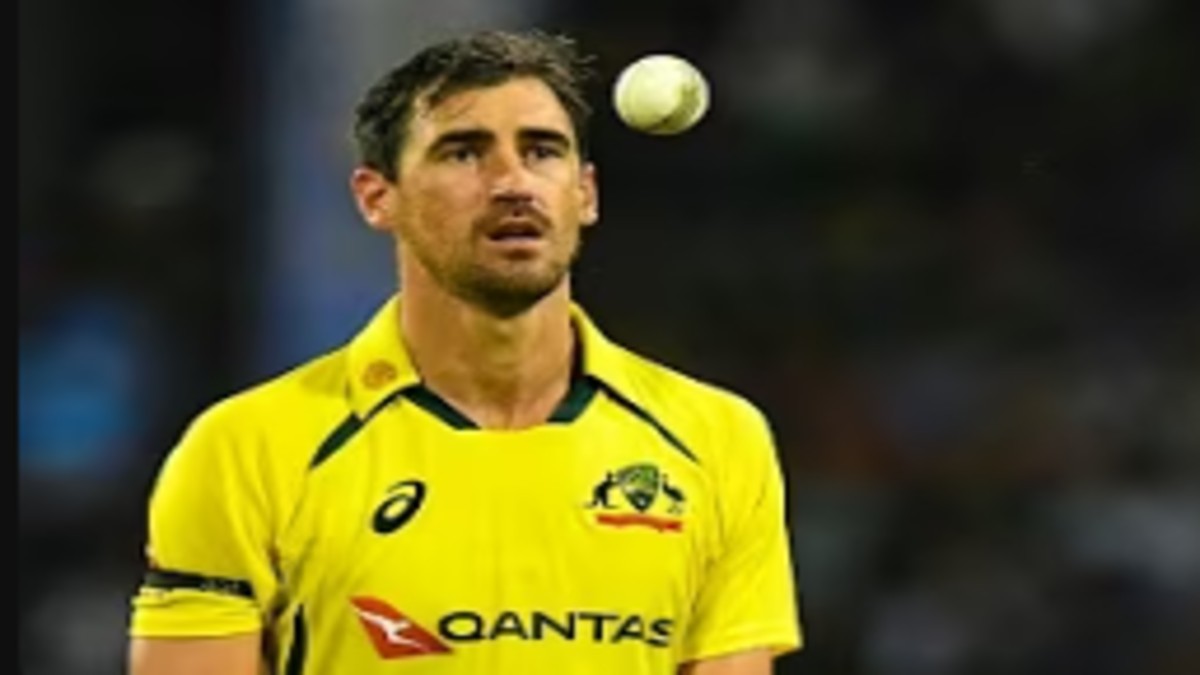Mitchell Starc’s T20I Retirement: A Strategic Exit from the Fast Lane
In the ever-evolving landscape of international cricket, where formats jostle for attention and players juggle workload with performance, Mitchell Starc’s decision to retire from T20 internationals feels less like a shock and more like a well-timed chess move. As ESPNcricinfo’s Alex Malcolm aptly put it, this isn’t a huge surprise — and when you look at the broader picture, it’s a masterstroke of career management.
The Anatomy of a Fast Bowler’s Career
Fast bowling is a demanding craft that requires explosive power, a consistent rhythm, and a body capable of enduring the stress of delivering high-speed balls over extended periods. For more than a decade, Mitchell Starc has been Australia’s leading fast bowler—a left-arm pacer who can swing the ball at speeds of up to 150 km/h, effectively dismantling batting lineups with his toe-crushing yorkers and skillful reverse swing. However, even the toughest athletes must choose their battles wisely. Now in his mid-thirties, Starc is opting to conserve his energy for the formats where his impact is most significant: Test cricket and One-Day Internationals (ODIs).
T20Is: A Format of Flash and Fatigue
T20 cricket is an exhilarating spectacle—fast, flashy, and unforgiving. It demands instant results, often at the expense of long-term physical sustainability. For bowlers, particularly fast bowlers, this format can be both thrilling and exhausting. The margin for error is razor-thin, and while the games are shorter in duration, the frequency and intensity of the workload are significant.
Mitchell Starc’s T20I career has been marked by moments of brilliance. He has participated in multiple T20 World Cups, delivered match-winning performances, and showcased his signature aggression in this shortest format of the game. However, unlike some of his peers, Starc has not fully immersed himself in the T20 circuit; he has selectively participated in franchise cricket, often opting out of IPL seasons to prioritize national duties and recovery. His recent decision to step away from T20 internationals reflects this same philosophy—one that prioritizes longevity, precision, and purpose over constant participation.
A Calculated Pivot Toward 2027
What makes Starc’s retirement particularly significant is its timing. With the 2027 ODI World Cup approaching, Starc is clearly aligning his career trajectory toward that goal. By stepping away from the T20I format, he’s freeing up both physical and mental capacity to focus on the formats that require sustained excellence. This decision isn’t just about managing his workload; it’s also about building his legacy. Starc has already made a mark in ODI history with his performances in the 2015 and 2019 World Cups. His ability to perform under pressure, especially in knockout games, makes him a valuable asset in Australia’s white-ball setup. By narrowing his focus, he’s positioning himself to be in peak form when it matters most.
Legacy Beyond the Numbers
Starc’s T20I statistics — 74 wickets in 58 matches — are impressive, but his legacy extends beyond mere numbers. He is a bowler capable of changing the outcome of a game in just one over, bringing Test-match intensity to T20 cricket, and never compromising his principles for the sake of popularity. In an era where many players pursue franchise contracts and global fame, Starc has remained grounded. He has prioritized national duty, often at the cost of lucrative T20 leagues. While this choice has faced scrutiny at times, it now appears to be a wise decision. It has allowed him to maintain his pace, avoid burnout, and remain relevant across formats.
The Reaction: Respect, Not Regret
The cricketing fraternity has responded to Starc’s retirement with admiration. There’s no outcry, no disappointment — just respect for a player who knows his body, understands his role, and is making choices that reflect maturity and foresight. Alex Malcolm’s commentary captures this sentiment well. Starc’s exit from T20Is isn’t a retreat; it’s a recalibration. It’s the kind of decision that elite athletes make when they’re thinking not just about the next match, but the next milestone.
What Lies Ahead
With T20Is off his plate, Starc’s calendar becomes more streamlined. Expect him to feature prominently in Australia’s Test and ODI squads, especially in high-stakes series and ICC tournaments. His experience, leadership, and ability to deliver in crunch moments make him invaluable — not just as a bowler, but as a mentor to younger pacers. There’s also the possibility of a late-career renaissance in franchise cricket. With T20Is behind him, Starc might explore selective T20 leagues where he can contribute without compromising his international commitments. But knowing Starc, any such move will be calculated, not impulsive.
Mitchell Starc’s retirement from T20 internationals serves as a reminder that greatness isn’t solely defined by playing in every format; it’s also about knowing when to step back. It emphasizes the importance of quality over quantity and impact over mere appearances. In a sport that often prizes hustle and constant visibility, Starc’s decision is refreshingly reflective. It reflects the choice of a player who is not pursuing headlines but rather aiming for a place in history. As fans, we will miss his explosive performances in T20Is, but we also look forward to what lies ahead. One thing Starc has taught us is that when he chooses to make an appearance, he makes it count.

